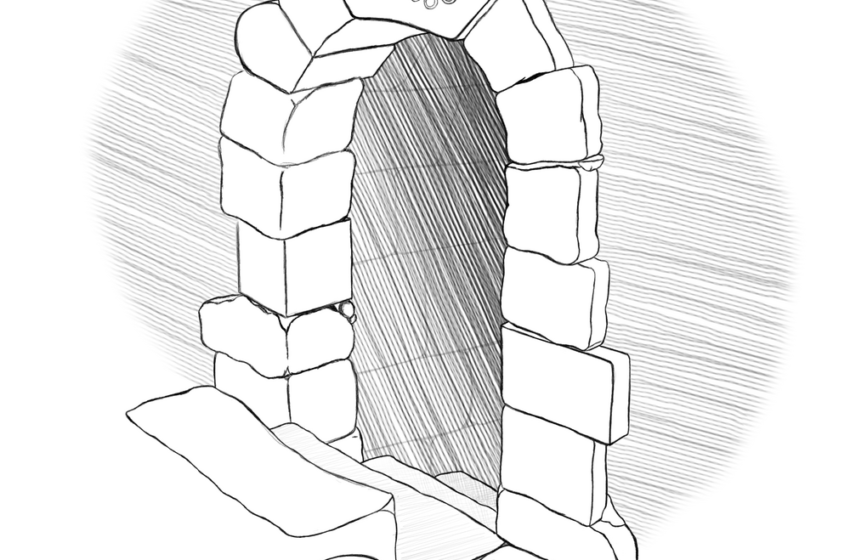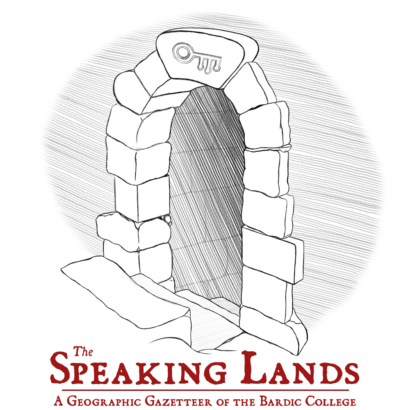This week’s entry is the Toriel Highlands, which takes us both out into the boonies as well as into the center of political power (at least until very recently). This region is home to vast and desolate landscapes, endless cavern complexes, hardy people, and the remains of empires both ancient and modern.
In other words, it’s full of stuff that adventures are made of.
Toriel is the first bit of the Speaking Lands that got a name, indirectly through the terrible joke that is the name of the megadungeon in Ascent to Prime: Tour Toriel. Obviously it’s a tower in someplace called Toriel. And the rest is somewhat tarnished and very fictional history.
Let’s check it out!
—
TORIEL
These rugged northern badlands separate the Norsteppes and Wildermarch. While all of the highlands stand at a higher altitude than the surrounding landscape, the southern ridgelines define the roof of the world, bearing the highest peaks in Ipeiros. Toriel’s plateaus drop lower and lower as one proceeds northwards, eventually collapsing into the boreal tundra. The region is seismically active and hosts a number of volcanoes.
Today the area is sparsely populated, primarily by small homogenous enclaves of renardi, goblins, dwarves, and kobolds. It is the ancestral home of the trolls, who called it Tor El, and whose ruins litter the landscape. Many of the current inhabitants are either permanent cave-dwellers or maintain fortified caves for defense. The region allows minimal agriculture and local diets rely on herds of goats and sheep, fishing the fast-moving mountain streams, and underground fungiculture.
The historical record shows that Toriel has seen waves of conquest and empires come and go, which seems at odds with the region’s present scarcity of food surpluses that might support such large state apparati. Scholars suggest environmental shifts may be to blame, and cite the exodus of the once-common troll population as corroboration. Others blame the Curse of Julianna for the collapse of large states in Toriel. Satyr scholars in particular point out that Toriel’s balkanization and recurrent famines began after the Bucoli Uprising removed the elves from Toriel, and insist that the invaders wrecked the region by importing ill-suited Lorathan species and forestry practices.
On the other hand, the Dread Tyrant held court in a Toriel fortress for the last five years of his continent-spanning empire. Whether this demonstrates that the region is not inherently incapable of hosting a political power or if his fall is simply proof of that infeasibility will be debated for decades to come.
Today, Toriel’s industries are almost entirely subterranean. The highlands have long exported ores from its extensive cavern complexes, and are famous for its signature Hardhollow steel. Recent innovations have harnessed the area’s geothermic potential to fuel jewelshaping enterprises. Toriel mushrooms are delicacies in Outland and Dion. Less reputably, cave-caught angler fish with bioluminescent lures are sold as glimmerfish to customers who don’t know better.
The Highlands’ greatest claim to fame is as the site of the ancient fortress Tour Toriel. Built up the sides and into the very core of a massive spire of rock, the fortress predates recorded history. What remains of the original foundations are almost certainly trollish, but successive occupants have rebuilt, reconfigured, and expanded the fortress with countless stages of construction. While the fortress has a reputation for being unconquerable, it has changed hands through violence more than once. More often, however, failed supply lines to the inaccessible fortress forced its abandonment, after which it another group or force would take up residence. The most recent master of Tour Toriel was the Dread Tyrant.
—
So now we move on from the roof of the world to one of the many many places it touched or came to touch it. Which of this grab bag would you like to check out next week, folks?


